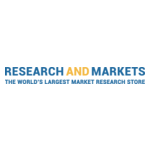DUBLIN–(BUSINESS WIRE)–The “Herbal Beauty Products Market – Growth, Trends, COVID-19 Impact, and Forecasts (2022-2027)” report has been added to ResearchAndMarkets.com’s offering.
The global herbal beauty products market is expected to register a CAGR of 6.5% during the forecast period (2022-2027).
During the COVID-19 period, the demand for consumer goods was halted by limited supply, followed by suppressed production of non-essential products during the lockdown. The scenario brought a definite restraining impact on the beauty products market, which was greatly offset by increased consumers’ preference for at-home, self-care rituals, especially among millennials. Inclination toward enhanced appearance and looks combined with increased adoption of herbal products among consumers are some of the factors that are anticipated to benefit the expansion of herbal beauty products market across the global market in the forecast period.
There is an increasing demand for herbal beauty products, owing to the rising consumer awareness regarding harmful effects of the chemicals added to the beauty products. Moreover, beauty companies have been acquiring herbal beauty and personal care brands to expand the consumer base who are progressively passionate about clean, green, and herbal products.
Key Market Trends
Popularity of Cruelty-Free Beauty Products to Drive the Market
Growing preference for chemical-free products, along with the rising popularity of environmentally-sustainable products is driving the demand for herbal beauty products across the world. The increased demand for chemical-free hair and skin products along with growing awareness about cruelty-free cosmetics products is supporting the market growth. The significant rise in the influence of social media and beauty blogs that are communicating the benefits of herbal beauty products is likely to influence sales of herbal beauty products.
Moreover, herbal beauty products are suitable for all types of skin which is influencing the sales of herbal beauty products such as foundation, eye shadow, and lipstick which are appropriate irrespective of skin tone. The availability of the various types of herbal beauty products and improving distribution networks are playing a key role to drive market growth.
Asia-Pacific is the Fastest Growing Market
The consumer inclination toward healthier lifestyles and the growing demand for products that have a low impact on the environment are driving the market growth. Furthermore, the growing acceptance of vegan lifestyles among millennials is likely to contribute to the growth of the market. Also, the increasing popularity of traditional Chinese ingredients in skincare products is also aiding the market growth as among domestic consumers, natural ingredients have become the top priority and concern in China. This, with the growing popularity of organic products, players are developing products with exotic ingredients.
For example, facial masks that contain snail cream from China are gaining extreme popularity. Face masks that incorporate healing and anti-aging properties and organic ingredients, such as argan oil serum green tea extract, Vitamin C, are also gaining popularity. The key players are focusing on the environmental dimension of their strategies by creating sustainable partnerships with local vendors or providing information to their consumers about the origin and quality of their raw materials to meet consumer expectations. This approach is not only for the procurement practices but also for the packaging which will change the market dynamics of herbal beauty products market in the upcoming years.
Competitive Landscape
The herbal beauty products market is fragmented with the presence of numerous players competing for the major position in the market. The key players are adopting various strategies such as expansion, mergers and acquisitions, partnerships and new product development to meet the growing demand. Some prominent players in the market are Arbonne International LLC, Weleda AG, Dr. Hauschka, Herbline, and Grown Alchemist.
Key Topics Covered
1 INTRODUCTION
1.1 Study Assumptions and Market Definition
1.2 Scope of the Study
2 RESEARCH METHODOLOGY
3 EXECUTIVE SUMMARY
4 MARKET DYNAMICS
4.1 Market Drivers
4.2 Market Restraints
4.3 Porter’s Five Forces Analysis
5 MARKET SEGMENTATION
5.1 By Product Type
5.1.1 Skin Care
5.1.2 Hair Care
5.1.3 Makeup and Color Cosmetics
5.1.4 Fragrances
5.1.5 Other Product Types
5.2 By Distribution Channel
5.2.1 Supermarket/Hypermarket
5.2.2 Convenience Stores
5.2.3 Specialty Stores
5.2.4 Online Stores
5.2.5 Other Distribution Channels
5.3 Geography
5.3.1 North America
5.3.2 Europe
5.3.3 Asia-Pacific
5.3.4 Rest of the World
6 COMPETITIVE LANDSCAPE
6.1 Most Adopted Strategies
6.2 Market Share Analysis
6.3 Company Profiles
6.3.1 Himalaya Herbals
6.3.2 Arbonne International LLC
6.3.3 Marc Anthony Cosmetics Inc.
6.3.4 Weleda AG
6.3.5 Herbline
6.3.6 Dr. Hauschka
6.3.7 Grown Alchemist
6.3.8 Estee Lauder Companies
6.3.9 Tata’s Natural Alchemy LLC
6.3.10 AIMIL Pharmaceuticals
6.3.11 Lotus Herbals Pvt. Ltd.
7 MARKET OPPORTUNITIES AND FUTURE TRENDS
8 IMPACT OF COVID 19 ON THE MARKET
For more information about this report visit https://www.researchandmarkets.com/r/yzf77n
Contacts
ResearchAndMarkets.com
Laura Wood, Senior Press Manager
[email protected]
For E.S.T Office Hours Call 1-917-300-0470
For U.S./CAN Toll Free Call 1-800-526-8630
For GMT Office Hours Call +353-1-416-8900







